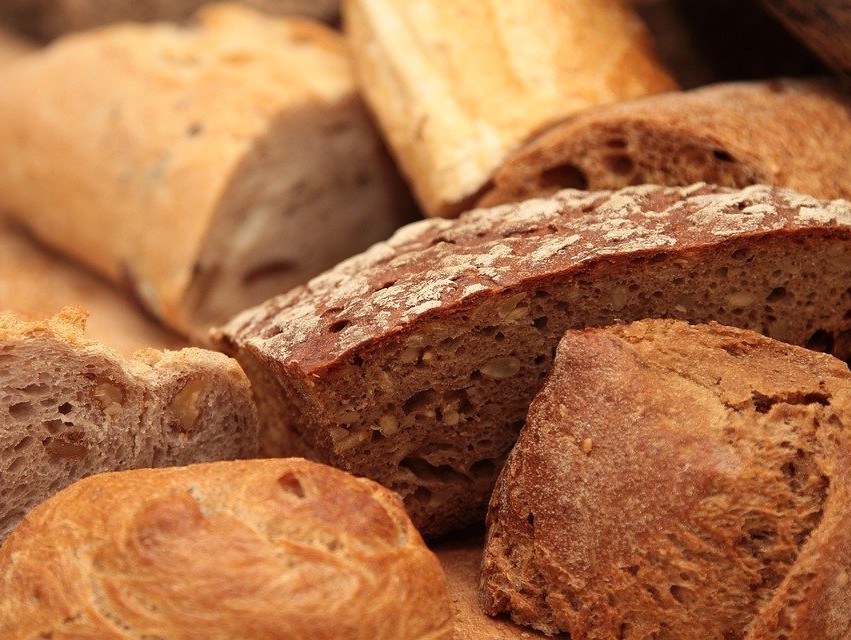
How much spelt is in a spelt bread? Can I give my gluten-allergic niece a corn bread? Just some questions consumers are struggling with. That is why new rules will enter into force on 1 July 2020, which have been laid down in the amended Commodities Act Decree on Flour and Bread. The Act was initiated by the NVB, NBOV and Nebafa to give consumers more clarity about bread types. The new rules have a transitional period of 2 years. This means that bakers have until 1 July 2022 at the latest to comply with this obligation.
NVB director Wim Kannegieter advises: "It is important for the transparency and credibility of the sector that the law and practice are aligned as soon as possible. For consumers this is very clear. So do not wait until 1 July 2022, but try to implement the changes as soon as possible".
NBOV director Marie Hélène Zengerink adds: "The new law offers transparency to the consumer and gives the baker the tools to continue his craft".
Because of the enormous variety of loaves that the Netherlands has, it is difficult to see the forest through the proverbial trees. That is why the bakery sector has advocated rules on the composition and properties of bread so that bakers can provide consumers with clearer and therefore more transparent information. In addition to the designation 'wholemeal', the approach was to define in law the designation 'spelt bread', 'multigrain bread', '(sour) desem' and 'desembrood' and to provide a solution for 600 gram loaves that cannot meet the requirements for the amount of dry matter of a half or a whole loaf. Involvement of other parties ultimately led to rules for:
1. Indication of white, brown, wholemeal;
2. Naming of loaves;
3. Composition of sourdough and sourdough bread;
4. New category for dry matter on bread.
1. White, brown or wholemeal
The words white, brown or wholemeal will be compulsory for all types of bread. This makes it clear to the consumer what the basis of the flour component is, irrespective of the colour of the bread.
2. Type(s) of cereal(s)
If 1, 2 or more cereals are mentioned in the designation, there are requirements as to the quantity of each of these cereals in the flour component of the bread. The order in which they are mentioned in the designation also becomes important: the grains that are in it most often come first. Bread that is now referred to as 'maize bread', for example, will soon be called 'white wheat maize bread' in most cases.
A 'multigrain bread' may only be called this way if the flour component contains at least 3 different types of grain and the main grain does not constitute more than 90% of the flour component. On pre-packaged bread, the percentage of different cereals must be indicated in the list of ingredients (KWID).
3. Desem
The definition of sourdough sourdough is laid down by law. Sourdough starter by definition contains active or reactivable micro-organisms and is a product of the fermentation of grain, water and naturally present micro-organisms. If micro-organisms originate from fruit, fruit juice or dairy products, the product may therefore not be traded as 'sourdough' or 'sourdough'. Nor may a powder with the taste of sourdough in which the micro-organisms have been inactivated be traded as a sourdough powder.
For sourdough bread, (acidic) sourdough has been used as the only raising agent and a maximum of 0.2% dry yeast or 0.5% fresh yeast has been added to the flour component. For bread with at least 30% fruit, nuts, seeds and/or kernels, the maximum amount of added yeast is 0.5% dry yeast and a maximum of 1.2% fresh yeast.
4. Whole, half or ...
In addition to a whole and a half loaf of bread, under the new law we also have a medium/large loaf of bread, which contains 360-400 grams of dry matter.
Breads weighing between 350 and 1000 grams must be produced on dry matter by a baker. This means that the amount of dry matter in the bread must meet the weights laid down in this Commodities Act Decree in order to be called whole, half or medium/large bread.
Producing on dry matter does not depend on whether the word 'bread' is in the designation or not. A 'Zaans volkorentarwe' (Zaans whole grain wheat), a 'brown bread with spelt and rye' or a 'white poppy seed ball' (white bread decorated with poppy seed) must therefore also meet the dry matter standards. Even if the net weight is stated on or with the bread, production on dry matter is necessary. Only bread with special characteristic ingredients in the crumb (such as raisins, nuts, seeds or kernels) is excluded from this, and only on condition that no 'whole', 'half' or 'medium/medium' quantity indication is used. A 'whole raisin bread' or a 'medium white walnut bread' must therefore be produced on dry matter, but a white raisin/nut bread weighing 900 g need not (indicate the net weight on pre-packaged bread).
In the near future, we will explain the various changes in more detail by means of examples. Do you want to get started right away? If you have any questions, please contact the NBC Knowledge Desk ([email protected]) or your branch organisation (for NVB: [email protected]; for NBOV: [email protected]) or your raw materials supplier(s).
Source: © NBC